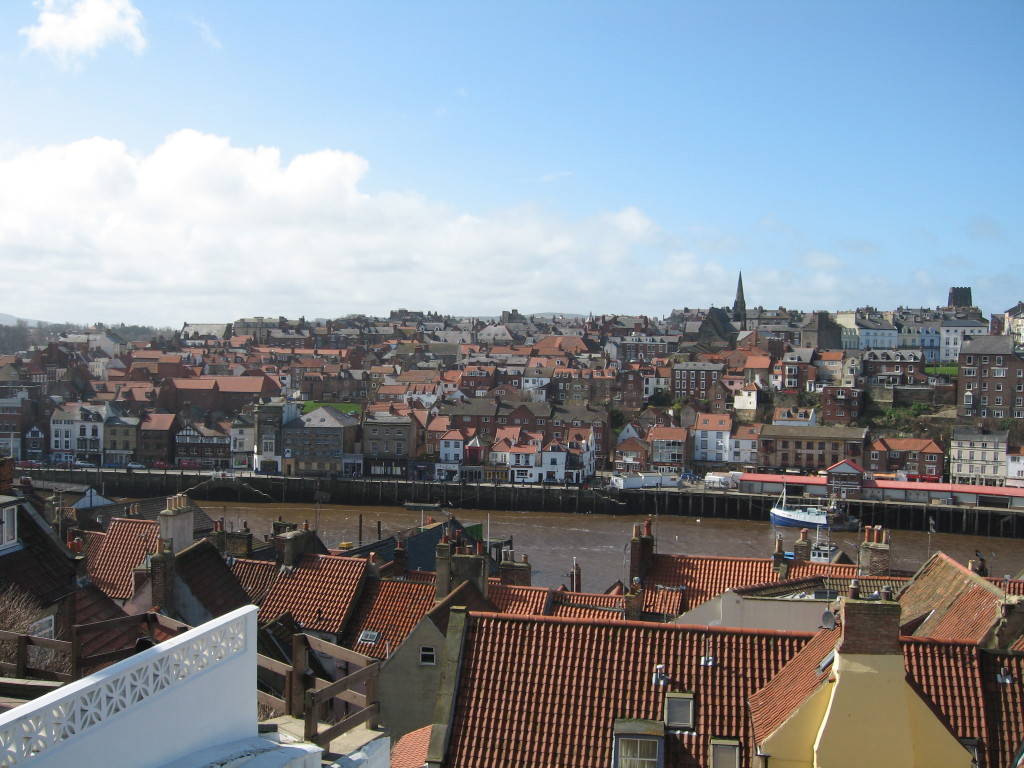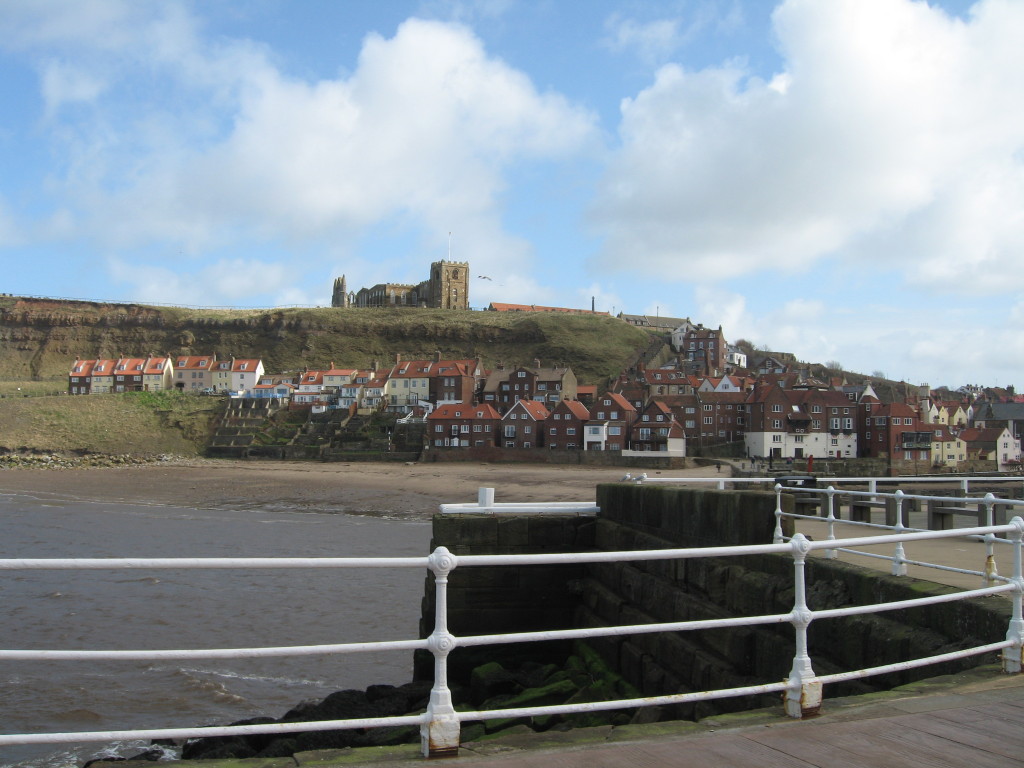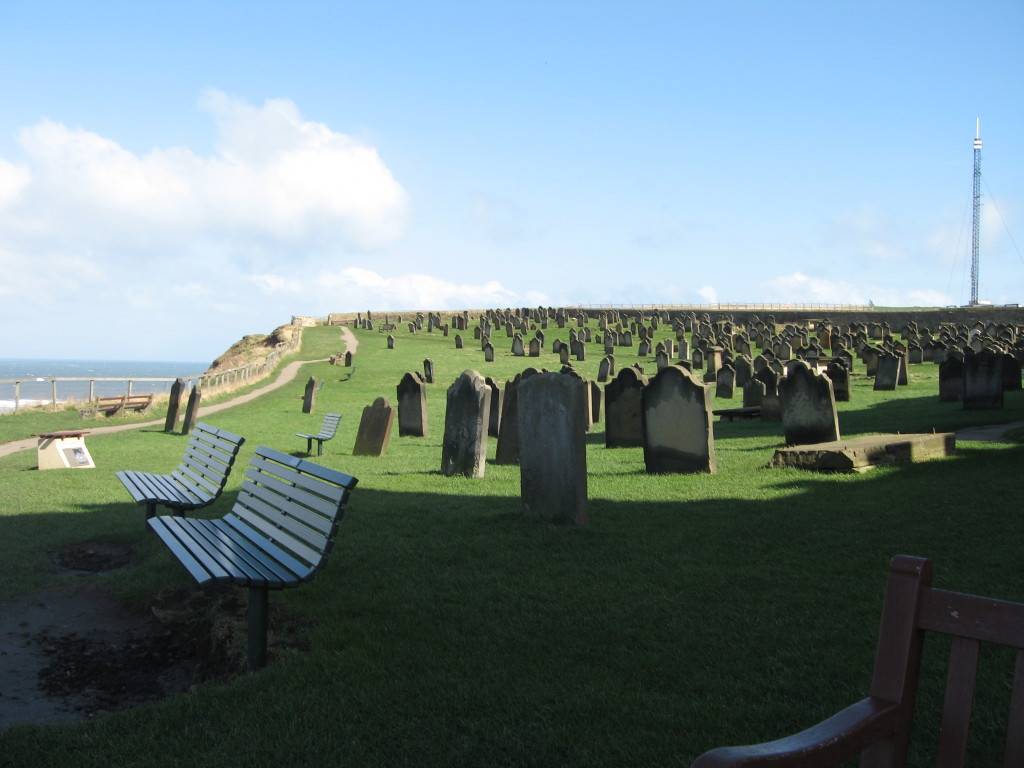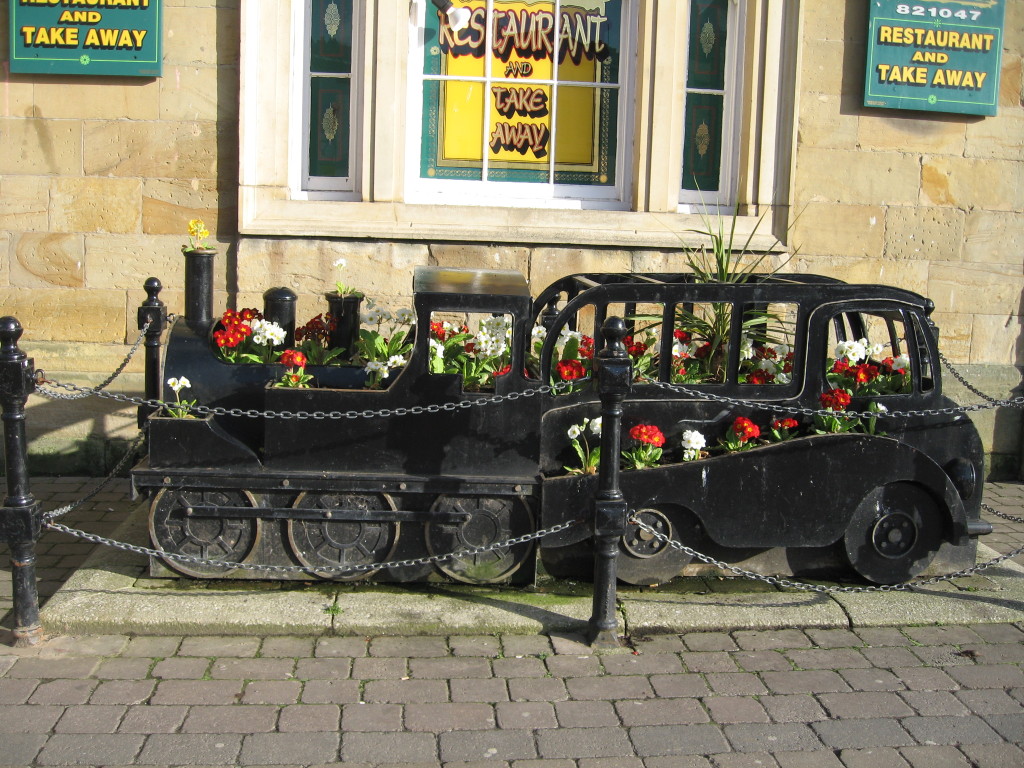I’ve been thinking about England a lot lately, which makes sense. After all, I just attended our Lakenheath high school reunion and my daughter and I are planning our next trip to England.
In the Veterans Day post I mentioned that every person has a story. But places also have a history, a story to be told, and I think Whitby, on the northeast coast of England, is an excellent example.
At the age of fifteen, on a school field trip, I first glimpsed the North Sea while visiting the English harbor town of Whitby. Almost thirty years later, in 2006, I returned with my teenaged daughter to share this unique town.
We day-tripped to the coast from nearby York, another great town for history buffs. Our bus took us over the winding roads of the Yorkshire countryside and its iconic images of old rock buildings, long-haired sheep and lush green hills, stopping in the small villages for the locals.
Spring weather in northern England is unpredictable, and while we were lucky to have sunshine and endless blue skies, there was also a biting wind blowing in from the North Sea. That wind at our backs gave us a welcome boost while climbing the 199 stone steps to the top of the East Cliff and St. Mary’s Church. I had counted the steps on my first visit, and now I could hear others counting as they climbed.
At the top of the steps, with its interesting history and spectacular cliff views, St. Mary’s Church is not just an appetizer for the more famous abbey ruins. Enlarged and modified over the years, the original stone structure dates to 1110. We admired the three-story pulpit and laughed at the large ear horn that was built in for the hearing impaired wife of a Victorian rector.
For me, the prize lay outside; a cemetery full of massive old headstones. Each memorial had a story, but many of those tales had been scrubbed away by centuries of salty air. Given more time and less of that corrosive wind sweeping over the cliff, I could have easily spent hours reading those epitaphs, with the sights, sounds and smells of the North Sea providing the perfect ambiance.
Nearby is the most famous attraction in town, the ruins of Whitby Abbey. Originally founded in 657 and destroyed by Vikings 200 years later, the present structure dates from 1078. One of the monasteries dissolved by King Henry VIII in 1539, it has long been scavenged for stones and was shelled by German warships during World War I. Still, some areas look whole but for the addition of some stained glass. Standing inside those durable stone walls, I’m not sure if I was more amazed by how much has been destroyed or how much remains.
A new visitor center opened at the abbey in 2002 and includes artifacts from archaeological digs on site and child-friendly interactive displays. While the artifacts were interesting, it was much more fun to view the videos, create words using stamps of Anglo-Saxon letters, and look at the images of clothing and menus from different periods of history. I love anything that helps get kids interested in history.
Because I was traveling with a teenager, we balanced the educational value of the morning’s activities with some shopping. Roaming the narrow cobblestone streets, we explored eclectic shops in centuries-old buildings. While my daughter concentrated on the merchandise, I imagined the variety of businesses that had occupied these buildings during the prosperous shipbuilding and whaling years of the eighteenth and nineteenth centuries.
Reminders of another prosperous period in Whitby’s history are scattered throughout the old town. Jet is a black semi-precious stone that has been tooled into beads and jewelry in this area since the Bronze Age. In the nineteenth century Queen Victoria wore jet jewelry as part of her mourning attire and quality Whitby jet was shipped all over the world to people who wanted to emulate royalty. Popularity of the stone has since declined, but since jet is part of the history of this town, many shops remain.
Whitby is drenched in history, but also has a sense of fun. Crossing the swing bridge to leave the older part of town, we found the Dracula Experience, a cross between museum and old fashioned haunted house. Bram Stoker spent time in Whitby and featured both the headland and St. Mary’s Church in his classic 1897 novel Dracula. We were joined by several pre-teen boys, giggling as they waited for something to jump out at them from the dark. We didn’t hear much of the informational soundtrack, but we had a lot of fun.
Finally it was time for the sea. Like any British seaside holiday destination, the walk to the piers and beach was lined with booths offering food, amusements and kitschy souvenirs. The booths were not open this early in the spring, but there were year-round indoor amusement arcades.
We left the relative shelter of the booths to brave the wind on our walk to the end of the west pier. Watching the waves strike the pier, I imagined how it must have felt to walk on a ship being hit by those cold waves while it was far from the safety and solidity of the pier.
Thoughts of dangerously unstable ships led me to the beach, a vast expanse of sand revealed by the low tide. Some brave souls, bundled up against the cold and the wind, searched the exposed sand for shells and beach glass while another used a metal detector in search of more lucrative treasure. Colorful bathing huts lined the shore, empty for the moment but ready to welcome the holiday crowds in the summer, just as they had since the shore became a popular destination in the Georgian period. This expanded even more when the railway arrived in 1839.
We are again going to visit Whitby on our next trip to England because there is still more we want to see. In one day we didn’t have time for the Captian Cook museum, the Whitby Lifeboat Museum or any of the other museums or art galleries. And this is a small enough town that you can walk to almost all the good stuff.
One of the reasons I love the stories of this small isolated town on the North Sea is that it is so incredibly adaptable. Over the centuries their economy has been based in whole or in part on fishing, mining alum, shipbuilding, whaling and tourism. No matter what happens, this town always seems to find a way to carry on.
One last link, just because I think it’s cool. This is from a blog about textiles by Viveka Hansen. This entry is about Whitby in the Edwardian period and has some great photos.







My favorite post yet! Your detailed descriptions and colorful photos paint a vivid picture of what Whitby is. I can’t wait to read about more of your favorite places!
Thanks for the comment, I’m glad you enjoyed the post! Stay tuned, I’ll do a post about Edinburgh soon. It’s the place that always feels like home whenever I visit.
I can’t wait!